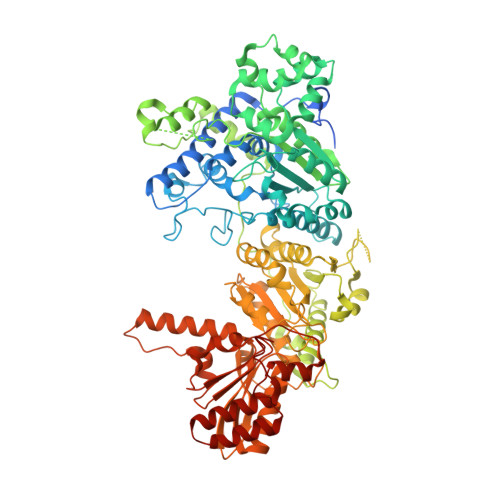A Dynamic Loop at the Active Center of the Escherichia coli Pyruvate Dehydrogenase Complex E1 Component Modulates Substrate Utilization and Chemical Communication with the E2 Component
Kale, S., Arjunan, P., Furey, W., Jordan, F.(2007) J Biological Chem 282: 28106-28116
- PubMed: 17635929
- DOI: https://doi.org/10.1074/jbc.M704326200
- Primary Citation of Related Structures:
2QTA, 2QTC - PubMed Abstract:
Our crystallographic studies have shown that two active center loops (an inner loop formed by residues 401-413 and outer loop formed by residues 541-557) of the E1 component of the Escherichia coli pyruvate dehydrogenase complex become organized only on binding a substrate analog that is capable of forming a stable thiamin diphosphate-bound covalent intermediate. We showed that residue His-407 on the inner loop has a key role in the mechanism, especially in the reductive acetylation of the E. coli dihydrolipoamide transacetylase component, whereas crystallographic results showed a role of this residue in a disorder-order transformation of these two loops, and the ordered conformation gives rise to numerous new contacts between the inner loop and the active center. We present mapping of the conserved residues on the inner loop. Kinetic, spectroscopic, and crystallographic studies on some inner loop variants led us to conclude that charged residues flanking His-407 are important for stabilization/ordering of the inner loop thereby facilitating completion of the active site. The results further suggest that a disorder to order transition of the dynamic inner loop is essential for substrate entry to the active site, for sequestering active site chemistry from undesirable side reactions, as well as for communication between the E1 and E2 components of the E. coli pyruvate dehydrogenase multienzyme complex.
- Department of Chemistry, Rutgers University, Newark, New Jersey 07102, USA.
Organizational Affiliation:


















